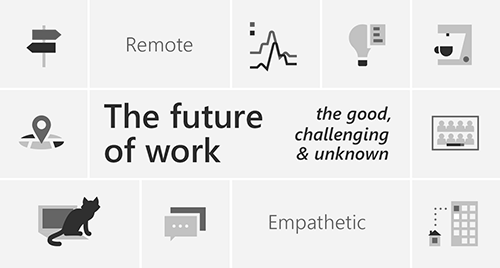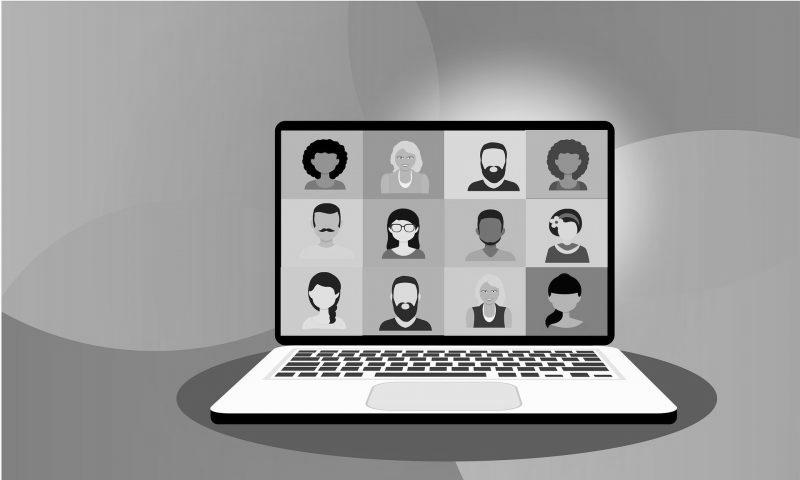Microsoft’s headquarters isn’t your typical corporate office. Instead of cubicles, the campus is filled with places to work together and on your own. Employees can switch between those environments whenever they feel the need. There are even tree houses, outdoor spaces, and cafes to escape the hustle and bustle of the office.
Work-life balance
Microsoft is a tech giant that values its employees’ work-life balance. The company conducts a series of surveys to gauge employee satisfaction and well-being. They include questions about opportunities for personal growth, workplace happiness, and joy with compensation and benefits. The company’s results suggest that more than 60% of employees don’t suffer burnout, and seventy-five percent are satisfied with their pay and benefits. Additionally, Microsoft employees report a positive work environment and ten holidays per year.
Microsoft has made changes to its work-life balance practices. The company has begun measuring the time employees spend collaborating and working independently rather than hours in the office. In addition, they are considering implementing shorter workweeks and measuring outcomes instead of hours worked. However, despite these changes, the report says that employees who spend more time collaborating on work are less satisfied with their work-life balance.
Microsoft has introduced tools for managing work-life balance in its Microsoft 365 system. These include Viva, an employee experience platform that integrates communications, knowledge, learning, insights, and engagement. These features promote a work-life balance culture by empowering employees to make more informed decisions.
Creating a work-life balance requires a clear definition of tasks and responsibilities. Employees must acknowledge their responsibilities, establish precise schedules, and commit to them. The key to work-life balance is establishing habits and setting priorities within your personal life. Doing this allows you to enjoy more time for yourself while still being productive at work. This is possible, even with a lot of personal commitments.
Microsoft’s work-life balance policy offers employees several benefits. Employees get 15 paid days of vacation, 10 paid sick days, 10 paid U.S. holidays, and two personal days each year. They also get four paid weeks of leave after six years of employment, and managers are flexible in allowing employees to take time off. In addition, Microsoft plans to make it’s temporary remote working policy permanent, although some positions will still require in-person presence.

Microsoft employees are generally satisfied with their work-life balance. 54% work less than eight hours per day, and only seven percent work more than twelve hours per day. The company has also been praised for its workplace culture and perks. Microsoft has been named Best Company For Employees Five Years in a Row.
Flexible schedules
Microsoft has implemented a flexible schedule policy to accommodate the changing needs of its employees. This policy allows Microsoft employees to work from home up to 50% of the time. However, employees must get permission from their managers before they can work from home full-time. They must also give up office space. Microsoft executives are in favor of the flexible schedule policy.
Flexible work arrangements help increase employee engagement and productivity. According to one study, almost 40% of job candidates prioritize schedule flexibility. Similarly, flexible work arrangements can enhance retention rates. Companies should recognize the importance of hiring the right people and increasing their work schedules’ flexibility to increase the work’s quality.
Microsoft employees can choose between flexible and fixed schedules. The company also provides an office dress code and an annual bonus, ranging from 0% to 40% of their salary. Microsoft offers numerous other benefits, including flexible work hours and family support programs. Furthermore, Microsoft offers a competitive salary for software engineers. Its average wage is roughly in line with the average of the FAANG companies. The company also provides excellent health benefits.
Microsoft plans to let more employees work from home, which will require some concessions. Microsoft CEO Satya Nadella has publicly criticized remote work, saying that in-office work is healthier for employees and their mental health. The new policy will be implemented in late March. Microsoft recently shared its practices for implementing this plan. A few employees had to adjust their schedules to suit the work demands of their managers.
The company has also implemented Shifts, a Microsoft Teams app that allows teams to create and manage shifts. The app also provides a range of templates to make changes. After selecting a team and the time zone, users can then add modifications. The shifts can then be approved or denied, as desired. This feature allows employees to work more efficiently. The flexible work schedules for Microsoft employees will also help the company increase its productivity.

The company offers an exciting working environment that encourages creativity, collaboration, and a healthy work/life balance. It also encourages employees to learn from one another and form personal relationships with experts in their field. However, like most large companies, Microsoft faces particular challenges, including the burden of bureaucracy, the high demands on employees, and the company’s competitive nature.
Health insurance
Microsoft offers excellent benefits and perks for employees, including Health Insurance and an Employee Stock Purchase Plan. Microsoft also offers various education and financial planning programs and a group legal plan, which provides various legal services for employees. Additionally, employees are entitled to ten paid holidays and sick leave, fifteen vacation days, and two personal days and are allowed to adjust their schedules as needed.
Microsoft offers employees health insurance through a partnership with insurer Premera Blue Cross and healthcare provider Eastside Health Network. The plan, called Health Connect Plan, aims to integrate health care services with insurance coverage. It includes a dedicated service center, a health navigator, and a concierge service that can help employees with everyday needs. Similar health care ventures are being pursued by tech giants such as Apple, Amazon, and Berkshire Hathaway.
While Microsoft offers a standard health plan, employees can also invest in a Health Savings Account (HSA). This type of account provides a tax-deferred investment option for future healthcare costs. It also helps reduce employees’ tax bills by thousands of dollars yearly. Moreover, HSAs are tax-deductible, and contributions to an HSA are similar to those in a 401k account. Microsoft also provides support for employees with disabilities.
Microsoft offers various parental leave benefits, including a 20-week paid sabbatical for birth mothers and 12 weeks for other parents. It also reimburses up to $600 for fitness classes, nutritional counseling, and healthy activities for children. Employees also have the option to opt for a childcare assistance program, which will reimburse them for up to 160 hours of childcare.
Microsoft employees enjoy many other benefits, including stock options and flexible working hours. The average salary for a Microsoft employee is $122,000 per year. The company also offers performance bonuses and annual cash bonuses. However, the actual benefits vary depending on the job title. You should contact your employer for more information about benefits and discounts.

The company also offers many resources for professional development. Employees can take online and offline courses to advance their careers. Microsoft also holds an annual Outside-In conference, inviting inspiring speakers to address their employees. Additionally, the company has an on-site library and reading room to help employees with personal and professional needs.
Diversity
While the diversity at Microsoft is improving, more work still needs to be done to ensure that the company is inclusive of the entire population. The company’s workforce is still over 71% male, with only 24 percent women. It is also predominantly white and male, with only five percent Hispanic/Latino employees.
According to Fortune’s diversity ranking, the company ranks well on diversity. Among the metrics included in the report is the proportion of women, minorities, and people with disabilities. Microsoft also measures well in daycare services and has a dedicated employee resource group. It also has a gender-diverse policy, which helps to make the company a more inclusive place to work.
In recent years, the company has taken meaningful steps to increase diversity. According to the latest diversity report, Black and African American employees comprise 5.7% of the company’s workforce – nearly a whole point since 2020. Microsoft says it’s the most robust year-over-year increase in five years. It has also increased its efforts to increase diversity at the executive level, where black and African-American employees represent 5.6% of the workforce. It hopes to double its minority executive population in the next five years.
Microsoft’s diversity initiatives have been largely successful, but their progress has been uneven. The company’s gender balance is at an all-time high, but a significant percentage of senior managers is still male. Many employees feel that the pace of change is too slow. Some managers are still prone to sexism and have a reputation for failing to promote women.
Microsoft has recently criticized its efforts to promote diversity and women in its workforce. While there have been complaints about discriminatory hiring practices, the company has publicly apologized for its mistakes and introduced new reporting options. It has also made substantial gains regarding gender equality in its tech division. According to the latest report by Microsoft, women now hold 24.4% of technical roles – a significant improvement from the 16.4% of women born in the same positions in 1997.
Despite these successes, the company is still far from being a truly diverse company. While some departments lack diversity, diversity initiatives have increased female employees in senior positions. Microsoft has also seen a rise in the number of women in new hires. Overall, however, executives acknowledge that Microsoft is grappling with the issue of gender inequality in the tech industry.






